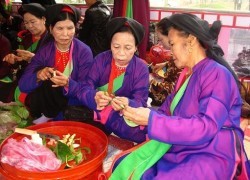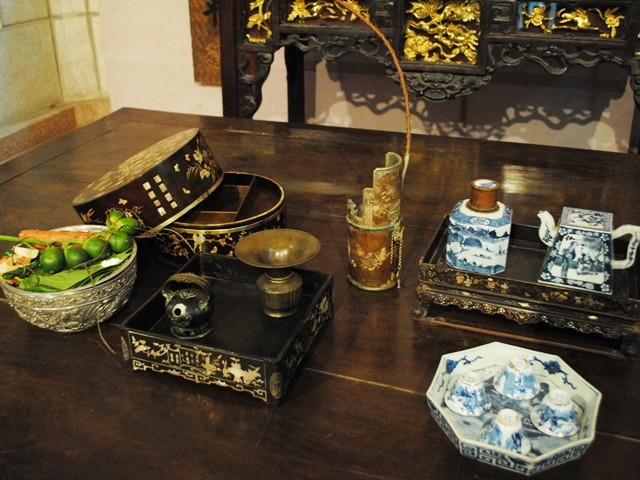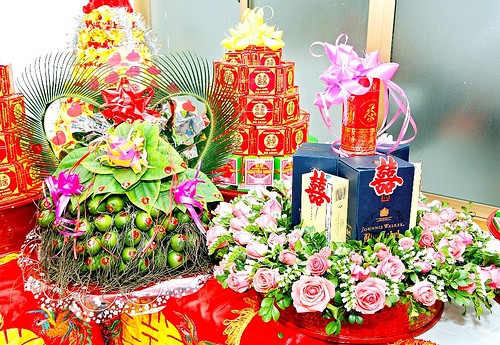(VOVworld)- In Vietnam, the custom of chewing betel and areca nuts dates back to the reign of the Hung Kings and has spread nationwide. In the southern region, the custom has its own character, reflecting local life and culture.
In the early 20th century, chewing betel was popular among both men and women in the southern region. At that time, the manner of chewing and offering betel and areca nuts was meticulous. Researcher Truong Ngoc Tuong says in Tien Giang province the custom has involved many codes of conduct and multiple utensils, which are often works of art embracing the cultural features of different periods.
 |
The lime pots of the royal family and upper-class families were often made of jade, bronze, elephant tusk, and glazed ceramic and made in China or France. The decorative patterns on the lime pots are varied and sophisticated. Betel trays are also varied. There are trays for daily use and trays for ceremonial purposes. Researcher Tuong says: “Betel trays used in engagement or wedding ceremonies are elaborately designed and decorated. We also worship Buddha with betel and areca nuts. Square offering trays are used to offer betel and wine during an engagement ceremony. There are two boxes on the tray: the larger box is for the husband and the smaller one is for the wife. There is also a pair of large cups representing indispensability between the husband and the wife. At a funeral, they remove one box and one cup from the betel tray”.
 |
The custom of chewing betel is closely associated with Vietnamese people’s community culture. A tray of betel and areca nuts is indispensable at weddings and worshiping ceremonies when Vietnamese people express gratitude to their ancestors. Many villages in Vietnam pursue the trade of making quids of betel for ritual ceremonies. 84-year-old Ly Thi Thanh of Can Tho city has earned her living by preparing betel quid for years: “Preparing betel quid is a meticulous work, so we have to be very careful. We put betel leaves in a box. Before talking with the bride’s family, we offer them betel and areca nuts. Betel and areca are used to start a conversation and help people become closer and more open with each other”.
 |
Research shows that the custom of chewing betel appeared long ago and is popular in many communities in Thailand, Cambodia, China, and India. In Vietnam, the betel and areca culture appeared in the Hung Kings’ reign and is closely associated with the “Legend of betel and areca nut” which reflects Vietnamese people’s respect for faithfulness and the family bond. In the southern region, the betel and areca culture is central to local people’s lives. The lime pot of the Khmer has an Indian tower shape. Lime pots of southern people are made of bamboo, wood, and clay and their size and decorative pattern differ from lime pots in other regions. The way they prepare betel quids is also different. Nguyen Thi Tham, Director of the Southern Women’s Museum, says a collection featuring the Vietnamese custom of chewing betel is on display at the museum: “The custom of chewing betel originated in the southwestern region. We hope to introduce this collection to other regions. In the near future, we will to further research on the origin of the custom and how it has changed over the years.
The custom of chewing betel may be gradually disappearing over time but betel and areca culture are still part of Vietnamese people’s cultural and religious life.